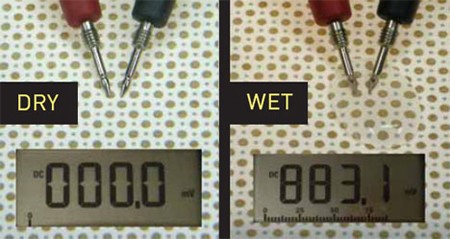
Monitoring medical patients remotely 24 hours a day has always proven to be a difficult proposition due the size of the wireless sensors attached to the patient’s body to relay vital signs. A team from Queen’s University Belfast has come up with a solution that utilizes the creeping wave effect. The effect applies to electromagnetic waves as they come into contact with solid objects. While the majority of the waves are absorbed by the object, a small amount move along the surface of the object before they continue their path.
Since most of the signal sent by conventional biosensors is absorbed by the patient’s body, the signal must be strong enough to compensate. The antennas designed by the Queen’s University team, though, focus their broadcast laterally instead of inward and outward, maximizing the amount of waves that will travel along patients’ bodies via the creeping wave effect and minimizing the amount that are absorbed. These antennas are up to 50 times as efficient as conventional antennas of the same size, broadcasting a stronger signal with less power.
The applications to the wireless body area networking, attaching multiple biosensors to patients’ bodies, field are obvious, but this technology could be used in other ways. Since the creeping wave antenna is small and wearable, it could conceivably be used to boost low power communication to PDAs, cellphones, or any other portable wireless product.
[via Medgadget]













